Productivity News
Minis
23.8k

Image Credit: Minis
This common mistake can tank a salary negotiation in minutes, says hiring expert
- To ace salary negotiations, focus on how you present your request, not just the amount. Adam Broda, Amazon senior manager and career coach, warns against asking for higher pay without justification, as it may seem like a "cash grab."
- Instead, provide clear reasons, like offsetting costs or aligning with market averages, to foster a collaborative discussion. Highlight your experience, results, in-demand skills, or salary data to strengthen your case. Using resources like Payscale or other salary databases can help.
- Hiring managers want fair deals and informed conversations make it easier for them to advocate for you and justify raises internally.
Read Full Article
45 Likes
Minis
9.5k

Image Credit: Minis
3 job interview red flags, according to a recruiter who’s interviewed ‘thousands
- Job interviews require professional etiquette, whether in-person or virtual. Emily Levine, EVP at Career Group Companies, shares three red flags to avoid:
- Arriving too early: Arriving 10 minutes early is ideal. Showing up earlier can seem overly eager and potentially disrupt your interviewer’s schedule. Plan to park 15-20 minutes beforehand to ensure timely arrival.
- Unprofessional presentation: Avoid chewing gum, wearing sunglasses on your head, or overpowering scents. Present yourself professionally to ensure focus stays on your skills.
- Sharing confidential information: Never bad-mouth past employers or disclose proprietary details, even under an NDA. This signals a lack of discretion and professionalism.
Read Full Article
32 Likes
Minis
3.4k

Image Credit: Minis
The 2 most underrated skills that will get you hired, from a CEO who’s interviewed thousands
- Adriane Schwager, CEO of GrowthAssistant, highlights two underrated skills that can set candidates apart: resourcefulness and proactivity.
- Proactivity shines when applicants share examples of solving problems without being prompted. Resourcefulness reflects their ability to innovate under constraints, such as limited budgets.
- Schwager values stories showcasing these traits, like an intern who rented a bike to deliver pizza on time after his car broke down. Early-career candidates can demonstrate these skills through internships or part-time jobs by showing initiative and creative problem-solving.
Read Full Article
14 Likes
The Beautiful Mess
370
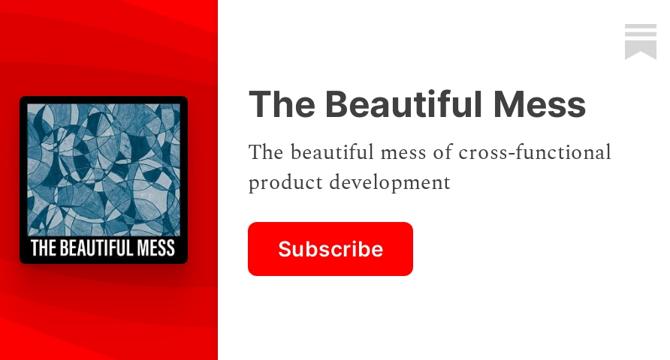
Image Credit: The Beautiful Mess
TBM 323: Quick Tool Tips
- Being mindful in the tool discussion is key to making them work for you instead of the other way around.
- Engage different perspectives and seek feedback from people outside of product managers and front-line developers.
- Low-fi implementation is a good starting point in figuring out what works before automating and scaling.
- Being consistent is good, but keep in mind the smallest number of things to hold consistent and avoid oversimplified models.
- Integrate the tools with rituals, habits, incentives, and behaviors that make them more effective and helpful.
- Be open to using different tool combinations for specific purposes rather than one tool that does everything.
- Documenting and testing with an overview is a good first step before charging ahead with a tool and making assumptions.
- Plan for changes and accept ambiguity as good at times. Be willing to start over and do a clean-up when necessary.
- TBM 323: Quick Tool Tips is designed to offer a new perspective on how teams buy, adopt, and customize road mapping, goal setting/tracking, and strategy deployment tools.
- The author shares quick tool tips that can help make the tools work for teams instead of the other way around by integrating with right incentives, being mindful, engaging different perspectives and seeking feedback.
Read Full Article
21 Likes
Leah’s ProducTea
407
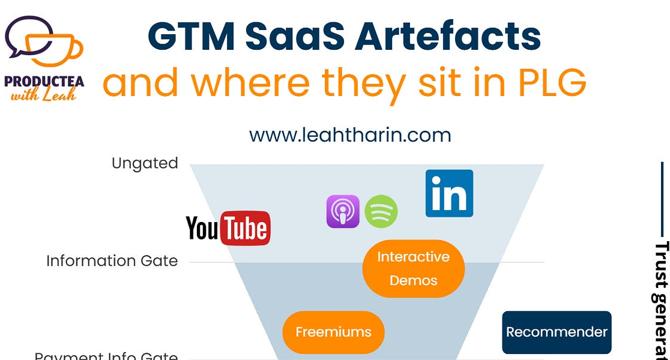
Image Credit: Leah’s ProducTea
PLG without the headache: Interactive Demos (2/3)
- An interactive demo is a simulated experience of your product offering often split by audience types. It is commonly understood to assist sales before, during or after a call to guide customers to the next stage in their buying journey.
- Interactive demos' main goal is to get people to experience your product’s Aha moment, which is that magical moment when a user finally gets it and understands your product's value.
- Interactive demos can be placed anywhere and everywhere it makes sense, starting with the homepage, above or directly below the fold, depending on how much education your buyers need.
- Use case-based interactive demos are very use-case specific and can be more than just "one" demo, making them more customized than freemiums.
- Interactive demos can be used to boost customer success and upsell specific services to existing customers.
- Ungated content makes it as easy as possible for the customer to consume, share, and do something with whatever they are given, signaling confidence and trust. An interactive demo is something that sits in between giving ungated access to the beginning of the demo and asking for an email further down in the funnel.
- Key metrics to optimize a demo's performance include impressions, demo plays per email domain, viewer to email conversion, and email to CTA conversion.
- In summary, focus your interactive demo on delivering one clear Aha moment, place it prominently above the fold, consider creating multiple demos based on specific use cases, start with ungated access, and track key metrics to optimize your demo's performance.
- In the next article, we'll discuss how Interactive Demos live in teams and organizations, who should build them, who owns them, and how to maintain them.
Read Full Article
23 Likes
Minis
5.4k

Image Credit: Minis
4 reasons you could be getting passed up for promotions, according to an ex-Google recruiter
- Nolan Church, a former Google recruiter, shares four key reasons why employees may miss out on promotions.
- First, a performance gap can arise from a lack of feedback, so it’s important to actively seek and apply feedback.
- Second, promotions may be limited by the absence of suitable roles, especially at higher levels.
- Third, budget constraints or business struggles can delay or prevent promotions.
- Lastly, not advocating for oneself can be a significant barrier. Employees should regularly communicate their achievements and progress to ensure visibility, especially in remote work environments.
Read Full Article
28 Likes
The Beautiful Mess
381

Image Credit: The Beautiful Mess
TBM 322: Work Shape Mix
- This post talks about work “shape” mix and why it matters when planning work for companies.
- The three broad buckets of work are large complex projects, independent product work and zero-to-one efforts.
- As a company grows, there is a shift in work from 0-1 to large and complex projects.
- It is important to find a balance between formalizing new reality and being patient with pain and confusion that comes with transitioning to new work shapes.
- Companies that incentivize the independence of teams often face alignment problems that might cause problems later on.
- It is essential to ask how to approach supporting teams through a challenging transition by acknowledging the current situation to support them.
- There is a window during which an organization has a decent shot at preventing slide and missing this window can lead to heftier transformation/shift.
- Understanding 3-5 distinct 'work shapes' that truly reflect how work gets done in an organization helps give a more honest view of the company dynamics and a clearer path forward.
Read Full Article
22 Likes
ADPList’s Newsletter
243

Image Credit: ADPList’s Newsletter
Apple's new design language
- Ameer Omidvar, a seasoned designer at Sigma, shares his insights on Apple's innovative design language, providing clarity on its significance and implications for designers everywhere.
- Apple revolutionized the industry with their products like Lisa (Personal computing), iPhone (Mobile Computing), Vision Pro (Spatial computing), and so many other iterations in between.
- The introduction of iOS 7 set the path for GUIs for the past decade, but it’s about time for new design principles to seamlessly work throughout Apple’s ecosystem inspired by the new platform Vision Pro.
- With the rise of Spatial computers, critical changes must be made according to the principles of Immersion, Sense of physicality, and a whole new sophisticated level of motions.
- The trend will also be like that in our 2D UIs in the future, and so we see a new form of Skeuomorphism returning to becoming popular, and the same principles are applied.
- Dynamic Island is a profound idea to generously turn a hardware challenge into a software advantage. Apple provides fluid and magical animations like Shazam on iOS 17, Airdrop, and more.
- Designers should start learning more about 3D graphics and environments, truly thinking “outside the box” and motion interactions. While always keeping the problem-solving approach at the core.
- Apple’s new design language unlocks tremendous new possibilities, solves problems, and feels more human-like.
- We're right at the edge of a new era; you can already see exciting changes happening to IOS, and Apple is making some changes throughout its UIs.
- Trends only become standards when they solve problems and unlock tremendous possibilities. Apple’s new design language has the potential to do just that and hence presents new opportunities for designers.
Read Full Article
13 Likes
Lenny's Newsletter
228

Image Credit: Lenny's Newsletter
How to become a supermanager with AI
- Director of Product Management at WHOOP, Hilary Gridley, shares strategies to leverage the latest AI tools to not just become a better manager but to level up her entire team.
- Supermanagers scale their efforts & effectively oversee larger, flatter teams and extend their coaching beyond just direct reports, fostering a culture of continuous learning throughout the organization.
- AI-powered GPTs can be used to nurture team’s writing instincts with personalized feedback, to help them apply theoretical concepts to real life with scenario-based simulations & to provide consistent, targeted practice.
- Level up your team’s writing skills & turn it into productivity with GPTs like "The Executive Editor" that give feedback on structure, clarity, level of detail & tone to create actionable recommendations for improvement.
- Help your team master synthesis skills - synthesizing meeting notes isn’t just admin work but a critical skill to prevent miscommunication, align teams, & sharpen strategic thinking aligned to update their perspectives and share key insights with others.
- PMs can use AI to coach synthesis through transcription & can review, highlight and annotate the transcript for key insights.
- Implement similar AI-driven coaching tools to help your team build confidence in areas like strategic thinking or decision-making.
- Create tailored GPTs which can synthesize information in specific creative ways & develop unique outputs and fields.
- By helping your team develop a natural instinct for collaborating with AI, the work gets more effective; building a more capable and adaptive high-impact product team.
- Supermanagers harness AI to amplify their impact while fully embracing the human side of management, and taking the entire team to whole new levels.
Read Full Article
12 Likes
Minis
2.7k

Image Credit: Minis
Indian-American CEO faces death threats after revealing 84-hour workweeks
- Daksh Gupta, CEO of AI startup Greptile, sparked controversy after revealing the company's grueling 84-hour workweeks in a tweet.
- He emphasized transparency, stating workdays start at 9 a.m. and often end at 11 p.m., with weekend work. While some praised his honesty, others criticized the toxic culture, questioning the lack of work-life balance.
- Gupta's inbox flooded with death threats and job applications. He defended his stance, clarifying the demanding environment was necessary for the startup's early stages and was not a long-term model.
- He also addressed racial backlash, stating his approach reflects his San Francisco mindset, not his Indian heritage.
Read Full Article
22 Likes
Minis
16.4k

Image Credit: Minis
CEO reveals the worst job interview response he’s ever heard
- During job interviews, honesty matters, but framing your answers is crucial. Daniel Haarburger, CEO of Woof, recalls the worst response he’s ever heard: when asked about their day-to-day life, a candidate replied, "Life’s a hot-mess express." This left a poor impression, signaling disorganization.
- Haarburger advises focusing on how you manage challenges instead. For instance, highlight strategies you’re using to stay organized.
- Confidence and clear communication are also key—maintain steady eye contact, a calm demeanor, and consistent body language. Honest but constructive answers paired with strong nonverbal cues can significantly boost your chances of landing the job.
Read Full Article
35 Likes
Minis
9.8k

Image Credit: Minis
Applying for a job you’ve never done before? Here’s how to stand out, says ex-Google exec
- Jennifer Dulski, founder of Rising Team and former Google and Meta executive, prioritizes potential over direct experience.
- She avoids rigid job requirements like "X years of experience," favoring candidates with transferable skills. For example, when hiring a chief of staff, she considered applicants with diverse backgrounds like project management and film production.
- To stand out, Dulski recommends exceeding expectations—submit creative materials like videos or personal user manuals. Such efforts helped candidates with relevant but non-identical experience shine in a competitive pool. "Go the extra mile," she advises, especially for roles you're passionate about.
Read Full Article
40 Likes
The Beautiful Mess
387
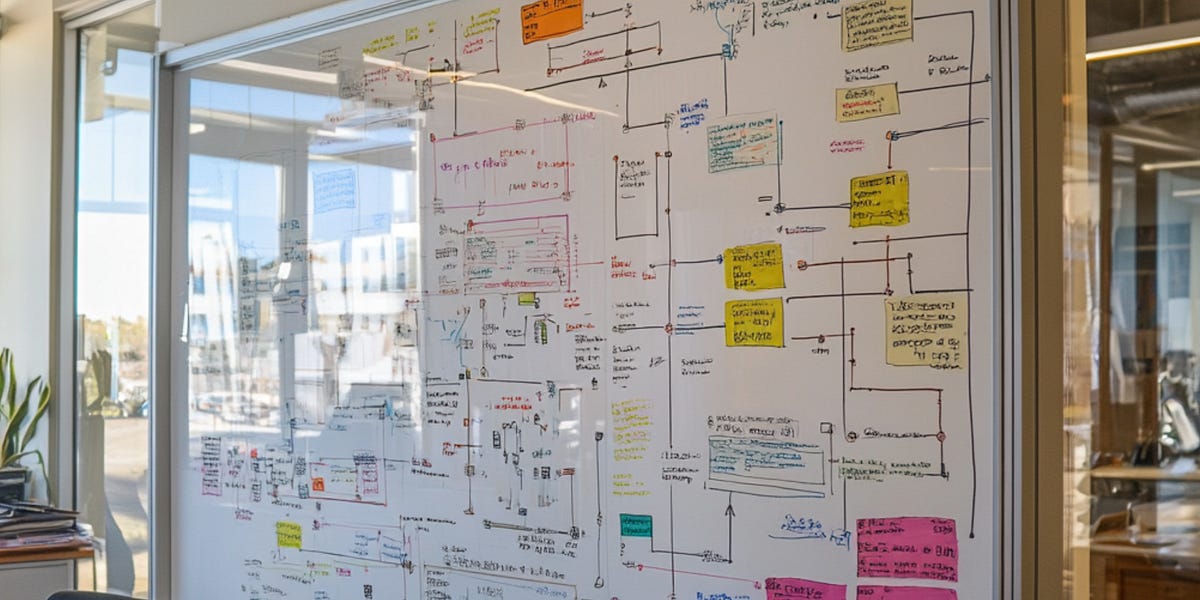
Image Credit: The Beautiful Mess
TBM 321: "Reducing Complexity"
- Product work, by its nature, is complex, and complexity emerges because it requires adapting to changing conditions, integrating new information, and solving problems without obvious solutions.
- Any group of humans in a company will be part of a complex adaptive system.
- When executives want to reduce complexity, they tend to push the cognitive load into the shadows because teams fear getting on leadership's bad side.
- The job of leadership isn't to reduce complexity in the work itself but to create an environment where people can work effectively with complexity.
- Teams can do complex work without the need for constant, tight collaboration by creating bounded bubbles of complexity with simple interfaces between them.
- Leadership should focus on reducing the drag and friction caused by too many priorities and other things that make it difficult for people to come together and do productive, complex knowledge work.
- It's not about the complexity of the work itself but about how the work is structured and communicated and how people are organized.
- The mental effort needed to understand how all of these pieces fit together is high, and it's not just the meetings, but everyone's calendars are packed with back-to-back meetings.
- The executive's gut-level response is usually that the team is overcomplicating something that should be straightforward, but they don't see everyone being overwhelmed by competing priorities.
- Reducing complexity in this case is impossible and undesirable, and the focus should be to create an environment where people can work effectively with complexity.
Read Full Article
22 Likes
Leah’s ProducTea
63
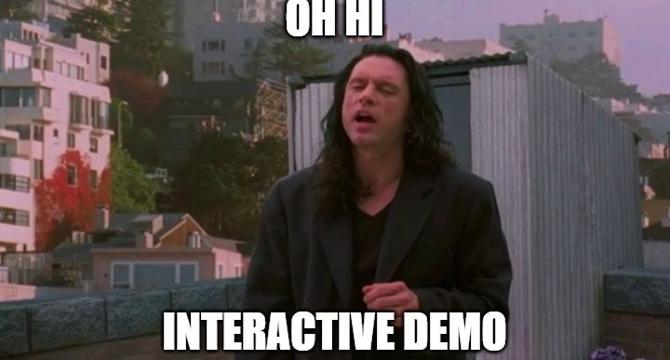
Image Credit: Leah’s ProducTea
Interactive Demos: PLG without the headache (Three part series)
- Interactive demos can be incredibly beneficial for both sales-led and product-led companies as they provide a simulated experience of a product offering often split into audience types.
- Interactive demos are easy to create and have almost no downsides/risks associated with them, making them a common tool to deploy and evaluate fast.
- Interactive demos are increasingly a topic with advising clients, especially when discussing product-led growth.
- Interactive demos are easy to build and maintain with low costs and can provide benefits such as increased revenue and deal flow.
- Interactive demos are easy to sell internally, and salespeople can use data and lead insights from interactive demos to improve sales and gain new customers.
- Interactive demos can be used in a variety of ways throughout the buyers' journey, making it a powerful tool for sales-led and product-led companies.
- Using interactive demos can assist sales-led companies in building self-serve motion by setting up an interactive demo first and then working up to a trial or freemium.
- Interactive demos can turn interested parties into advocates, using the demo to share knowledge within their company after watching it themselves.
- Interactive demos are often the move for companies as they help buyers who have interest in a product without us accidentally treating them like users.
- In summary, Interactive demos can be used almost always in B2B as they are a low risk effort and more often than not sales are extremely grateful to have a tool that works for once right out of the box.
Read Full Article
3 Likes
Lenny's Newsletter
343
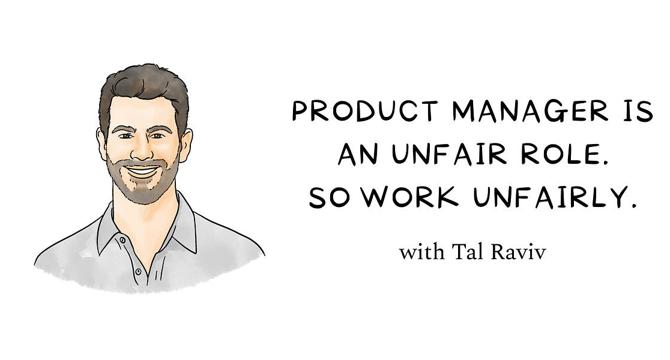
Image Credit: Lenny's Newsletter
Product manager is an unfair role. So work unfairly.
- Product management is an unfair role, but with the right productivity tactics, PMs can thrive even in today’s flatter tech industry.
- To work more efficiently, try getting out of tasks before they reach your to-do list by completing action items live during meetings.
- Use Loom or Slack video clips to communicate high-bandwidth concepts, such as decisions, collaborations, and communication.
- To create boundaries with Slack and avoid digital Whac-A-Mole, implement Slack rituals, and norms.
- Create a self-reliant team by empowering team members to develop their expertise and encourage them to think like PMs.
- Product scrapbooking can be highly beneficial in saving customer insights and ideas way in advance for future projects.
- AI tools and productivity systems can help PMs achieve tremendous leverage and impact beyond what many traditionally believe ICs can accomplish.
- PMs who build their own systems, methodologies, and tools that work for them, not the other way around, will lead successful teams and companies.
- Great PMs will work "unfairly" today to drive successful outcomes and ensure their well-being where fairness is unlikely.
- To get more done with fewer resources and manage multiple teams while staying hands-on, PMs should start working on building a "system" that works for them.
Read Full Article
19 Likes
For uninterrupted reading, download the app